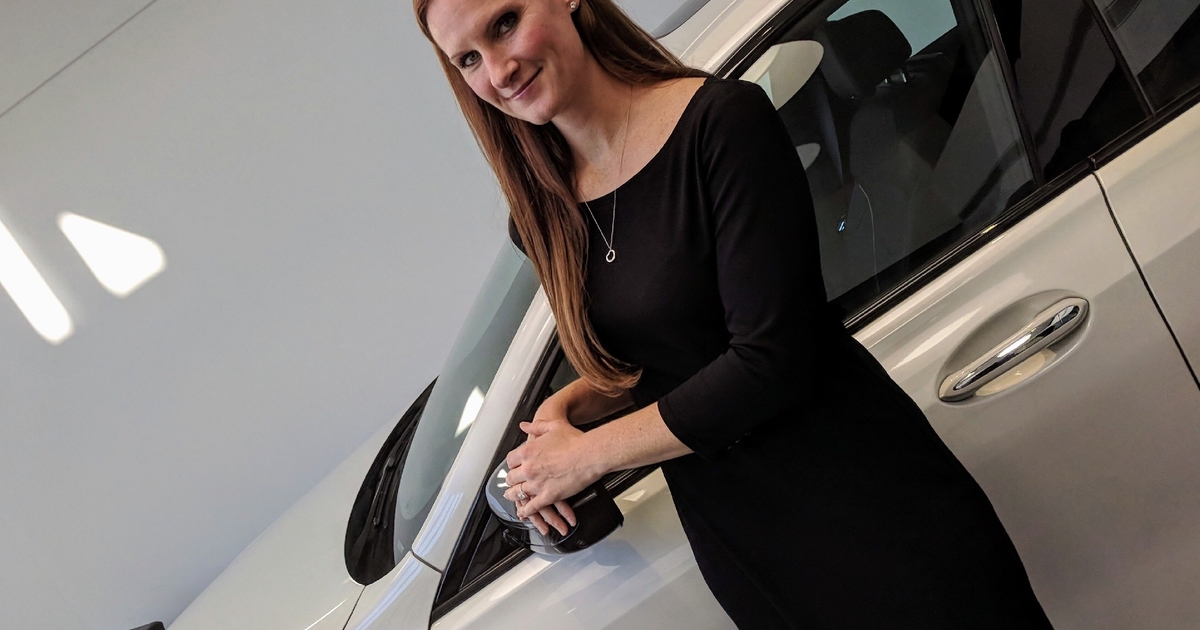
In 1978, Lyn St. James read an article about the Ford Mustang in Car and Driver. The story had a sidebar about Ford’s interest in marketing the Mustang to women by providing competitive and racing opportunities.
St. James had been racing for fun for years and earned her competition driver’s license at age 27. She was ready to get more serious and was looking for a sponsor. “I wrote letters to everyone at Ford who was quoted in that article, asking them to sponsor me,” she says. She got a letter back from Ford, congratulating her on her racing success and telling her to keep them informed about her career. So she did. She raced whenever she could and sent her results to the Ford team. After a dogged pursuit, in 1981, she became one of the first female race car drivers to receive a full-season sponsorship.
Her subsequent story is legendary: St. James was the first woman Rookie of the Year at the Indianapolis 500, in 1992 — and she had six more Indy 500 starts after that. Her 20-year racing career included 21 international and national closed-circuit speed records. She was named one of Sports Illustrated’s Top 100 Women Athletes of the 20th Century. And she is one of six people being inducted into the Automotive Hall of Fame on July 21.
The recent attention has been gratifying, St. James says. “The world was paying attention to me in the ’80s and ’90s. Then the world wasn’t paying attention,” she says. “This last year in particular I’ve been aghast — people want to hear from me again.”
That might be because her story is so compelling. She grew up in Ohio, the only child of a father who was a sheet metal worker and a mother who had polio. Because her mother couldn’t walk far, St. James says, “For her, a car was everything. She taught me how to drive — and taught me that a car talks to you, how to recognize the important smells and sounds.”
As a teenager, St. James worked part time at a service station. One year, her co-workers were headed to the Indy 500, and St. James and her mother tagged along. “After that, I would go to the drags with the guys. One night I brought a trophy home, and my mom was not happy,” she says. “It was the first time I had competed in a race. It was exciting, and really got my juices going.”
But, St. James says, “Until I was in my mid-20s, I did everything society said a woman should do. I got an education, got a job, bought a car, met a guy, followed him to Florida and got married. I helped him build a business. But then we started going to the races together. We both decided to start racing — me in my Pinto.”
After getting her Ford sponsorship in 1981, that “traditional” life changed as her racing career took off. For years, she says, “I was generally the only female in the gang. And like most women, I underplayed it. I did everything to make people not notice that I was a girl. But I did still paint my nails; I didn’t want to compromise me.”
St. James says as she raced and traveled the country as a Ford representative and consumer adviser, she interacted with corporate executives and women at dealerships. “I got to interact with the few women who were then in the industry, and I could see the similarities — the isolation they felt,” she says. She connected with and stayed in touch with women such as Bobbie Gaunt, a Ford executive who ultimately became president of Ford Canada. When she began receiving sports industry accolades, St. James met and found she shared similar experiences with athletes such as tennis legend Billie Jean King and Olympian Donna de Varona, who became friends and a sounding board.
After 2000, when her racing career ended, she began a second career as a motivational speaker and an activist for women in motorsports. In 2021, St. James was named the North American representative on the FIA Women in Motorsport Commission. And in April, she and motorsports executive Beth Paretta founded Women in Motorsports North America, a group designed to encourage, support and mentor women who want to build a career in motorsports.
“Today there are so many more women in motorsports. And it’s not always about the drivers, but about women in the industry overall — in engineering, running the business, team owners, tracks, marketing departments. Many of these women have been doing this for decades,” St. James says. “We want to celebrate the successes, because if you don’t see success, why pursue it? One of our goals is to attract new faces, bring new people into the sport.
“Our sport is rich with opportunity, partly because it’s not as structured as the corporate world. It’s more entrepreneurial. There’s room for new things, new faces, new ideas. And women need to be part of that conversation.”
Looking back on a career of milestones and breakthroughs, St. James says what she’s most proud of is her long career, both on and off the racetrack. “So often in any career, but particularly for competitive activities like sports, you’re lucky if you get 10 years. You reach a peak and it’s the end. It could have been the end for me in 2000, after three decades of racing,” she says. “But my career didn’t end there. And I’ve come to understand that I’ve made an impact. That’s incredibly rewarding.”